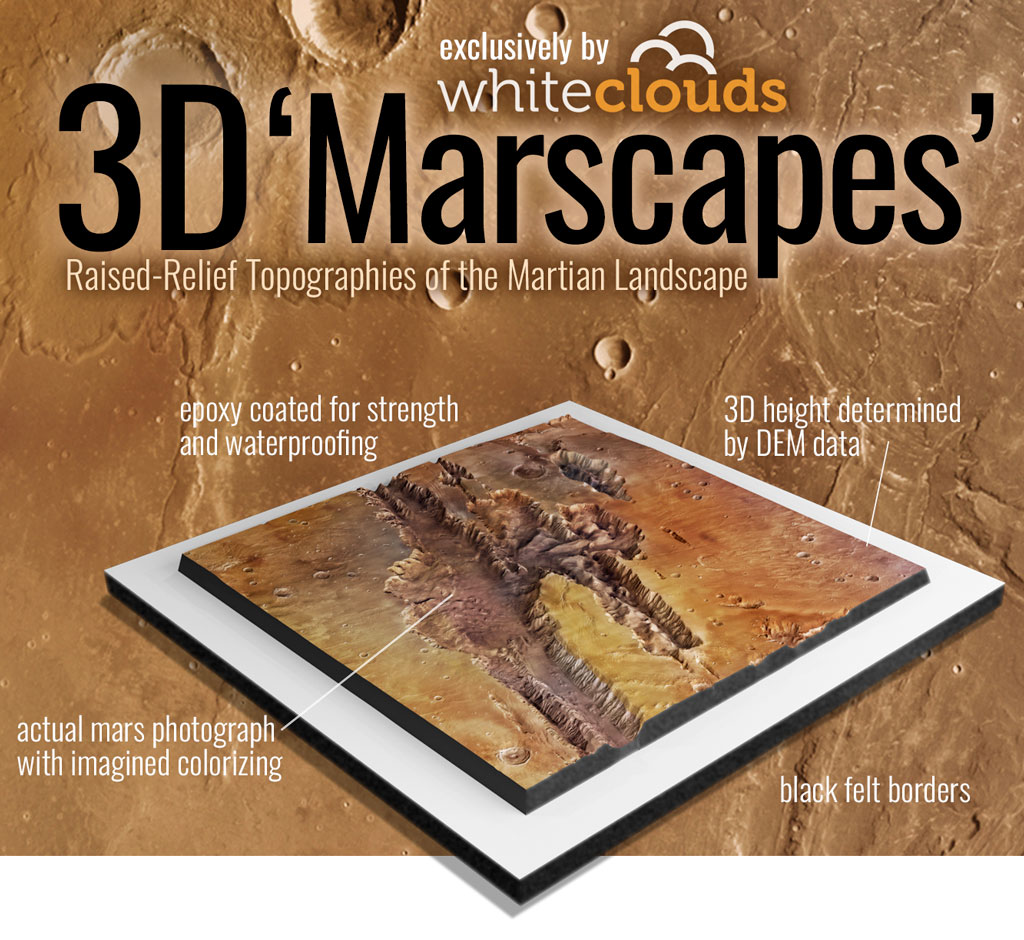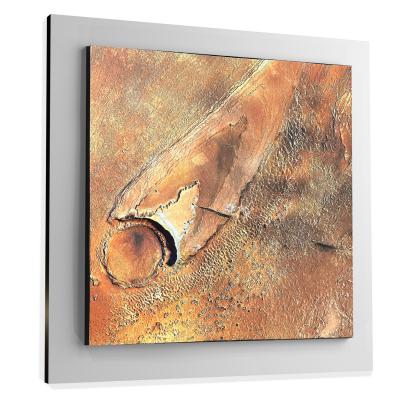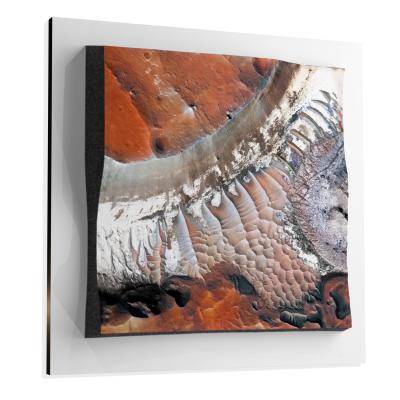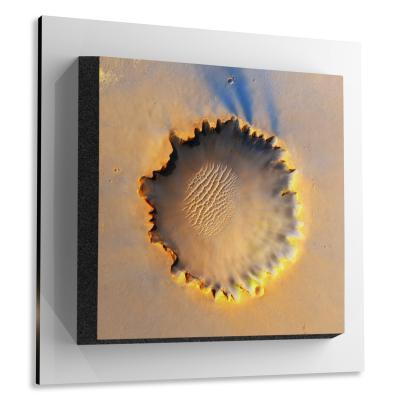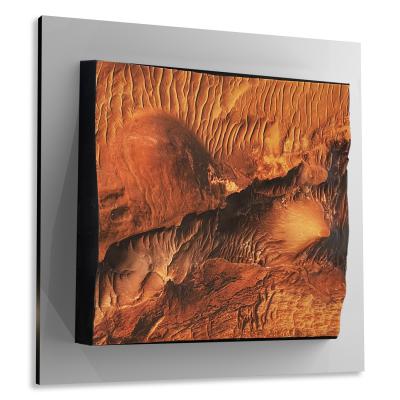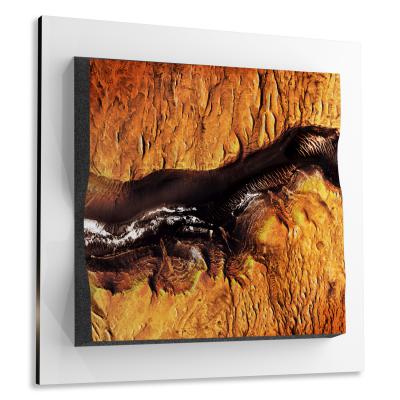Saheki Crater
Saheki Crater
We Build Custom 8K Mars Canvas Prints of Saheki Crater
Did you know we make
custom
8K Mars Canvas Prints

and
3D Marscapes

Saheki Crater
The Saheki Crater is a compelling feature on the Martian surface that has attracted the attention of scientists and researchers for its unique geological features and importance in understanding the planet’s history. Named after Tsuneo Saheki, a Japanese astronomer, the crater offers a rich ground for scientific exploration and is of considerable interest for what it can reveal about Mars’ geological, climatic, and perhaps even biological history.
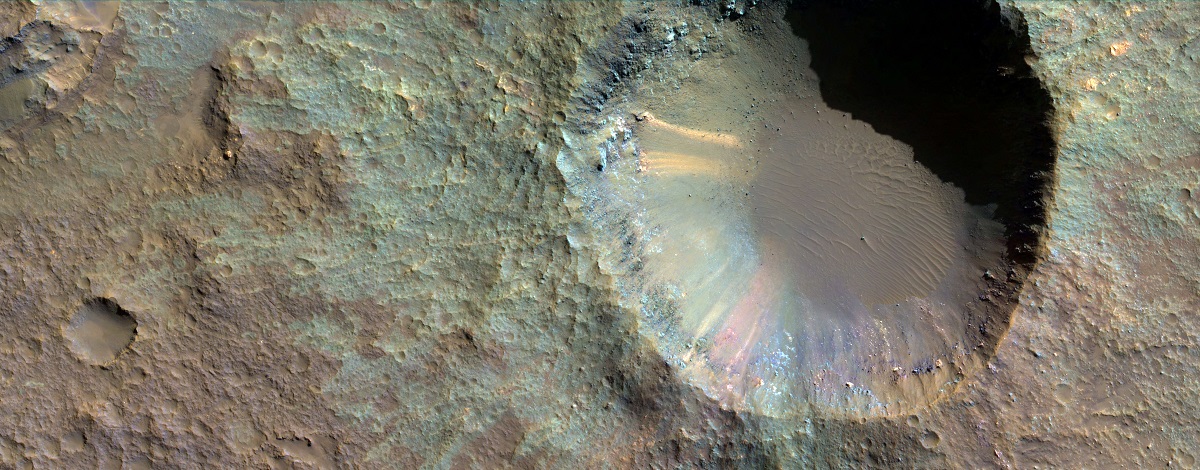 Crater on the Floor of Saheki Crater
Crater on the Floor of Saheki Crater
Geographical Location
Saheki Crater is strategically positioned within Tyrrhena Terra, a rugged, ancient terrain situated in the southern highlands of Mars. With specific coordinates at approximately 9.2°S latitude and 101.5°E longitude, it is a substantial geographical feature, boasting an awe-inspiring diameter of about 85 kilometers. Not merely an isolated entity, the crater is ensconced amidst an intriguing tapestry of impact craters, basins, and undulating landscapes that collectively contribute to the geological richness of the region. What sets Saheki Crater apart is its unique positioning, lying in proximity to the Martian equator while being deeply embedded within the older terrains of the southern highlands. This provides an unparalleled window into multiple geological epochs, enabling scientists to explore the transitional facets of Martian history—where ancient landscapes meet comparatively younger terrains.
Advertisement
Sample Marscapes
Geological Composition
Peeling back the layers of Saheki Crater is like reading an intricate geological manuscript written over millions of years. The crater floor is a complex patchwork of rock types, boasting multiple layers of sedimentary rock deposited sequentially over extensive periods. These layers could be indicative of periodic aqueous or wind-driven sedimentary processes. Likewise, the encircling walls of the crater unveil distinct bands of layered rocks, each stratum potentially representing a different epoch in Mars’ long and storied geological history. Adding to the site’s intrigue are the discoveries of certain minerals like sulfates and clays. These are not random mineralogical anomalies; rather, they usually form in the presence of liquid water, hinting at the crater’s aqueous past. But the geological intrigue doesn’t end here. The rim and the ejecta blanket of the crater encapsulate a diverse amalgam of rock types—ranging from the more common basalts to fragments of ancient Martian crust. This suggests that the impact event that formed Saheki may have penetrated deep into the Martian subsurface, excavating and mixing rocks from varying depths to produce a localized but incredibly rich geological history.
Significant Discoveries
Ancient Water Channels
One of the most pivotal discoveries to emerge from the study of Saheki Crater is the presence of geological formations that closely resemble ancient fluvial channels. When these channels are examined in the context of the sedimentary layers and the occurrence of water-associated minerals like sulfates and clays, the inference becomes clear: Saheki Crater was likely once a hospitable environment for liquid water.
Impact Chronology
Saheki Crater is a fascinating case study in the intricate chronology of impact events on Mars. The crater seems to tell a complex tale of multiple impacts over its history. This is evidenced by overlapping crater rims, varying degrees of erosion, and distinct layering, all of which combine to offer an invaluable, albeit complicated, record of Martian impact history.
Mineralogical Evidence
The discovery of specific minerals, notably sulfates and clays, has reignited scholarly debates about Mars as a potential host for past life. These are not just any minerals; they often form in aqueous environments and could have provided a chemically fertile ground for microbial life, should it have ever existed on Mars.
Scientific Missions
Our understanding of Saheki Crater has greatly benefited from numerous scientific missions to Mars. The NASA Mars Reconnaissance Orbiter (MRO) has played an instrumental role by capturing high-resolution imagery of the crater and its complex features. Furthermore, MRO’s Compact Reconnaissance Imaging Spectrometer for Mars (CRISM) has delivered crucial data on mineral compositions, facilitating a more nuanced understanding of the crater’s geological fabric. The European Space Agency’s Mars Express mission has also been invaluable, providing critical topographic data that have aided in mapping the nuances of the crater’s multifaceted landscape. Looking ahead, planned future missions have set their sights on Saheki Crater as a prime target for more in-depth investigations, aiming to unearth its geological and potentially hydrological mysteries.
Geomorphological Features
Saheki Crater is a geomorphological treasure trove. Far from being a simple, bowl-shaped depression, its floor is adorned with layered sedimentary deposits that possibly hint at a rich history of sedimentation, perhaps by fluvial processes. The channels that meander across the crater floor offer further testament to its dynamic past, likely shaped by liquid water. As for the walls of the crater, they are etched with intriguing patterns of erosion and layering, perhaps shaped by varying climatic conditions, including periods of water flow and wind activity. The crater’s rim and the surrounding regions are not immune to this geological complexity. They showcase fascinating phenomena like landslides and slumping, which could be indicative of localized seismic activities, possibly triggered by subsequent impact events or intrinsic geological processes. All these features collectively offer a vibrant palette for scientific inquiry into Martian history.
Saheki Crater serves as a geological microcosm that offers tantalizing clues to Mars’ complex history. From its diverse geological composition and compelling mineralogical evidence to its intriguing geomorphological features, the crater is a goldmine of scientific information. Its unique location and the plethora of significant discoveries it has yielded make Saheki Crater an indispensable subject for future Martian studies. As we continue to explore Mars, both robotically and perhaps soon with human missions, Saheki Crater will undoubtedly remain a focal point for uncovering the secrets of this enigmatic planet.
Check out our 3D Mars Learning Center for more information on Mars and Saheki Crater. You can also learn more at: NASA Mars Exploration.
More About Mars
Contact us today to learn more about our 3D services and how we can help you achieve your goals.
